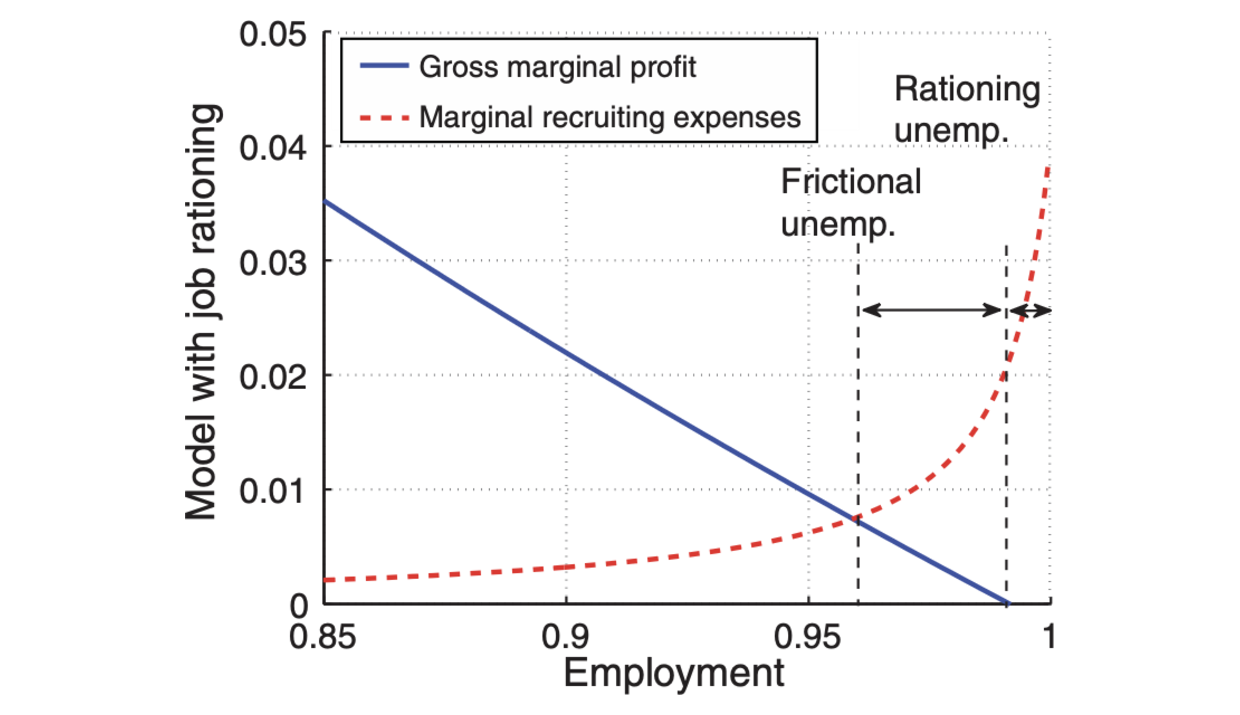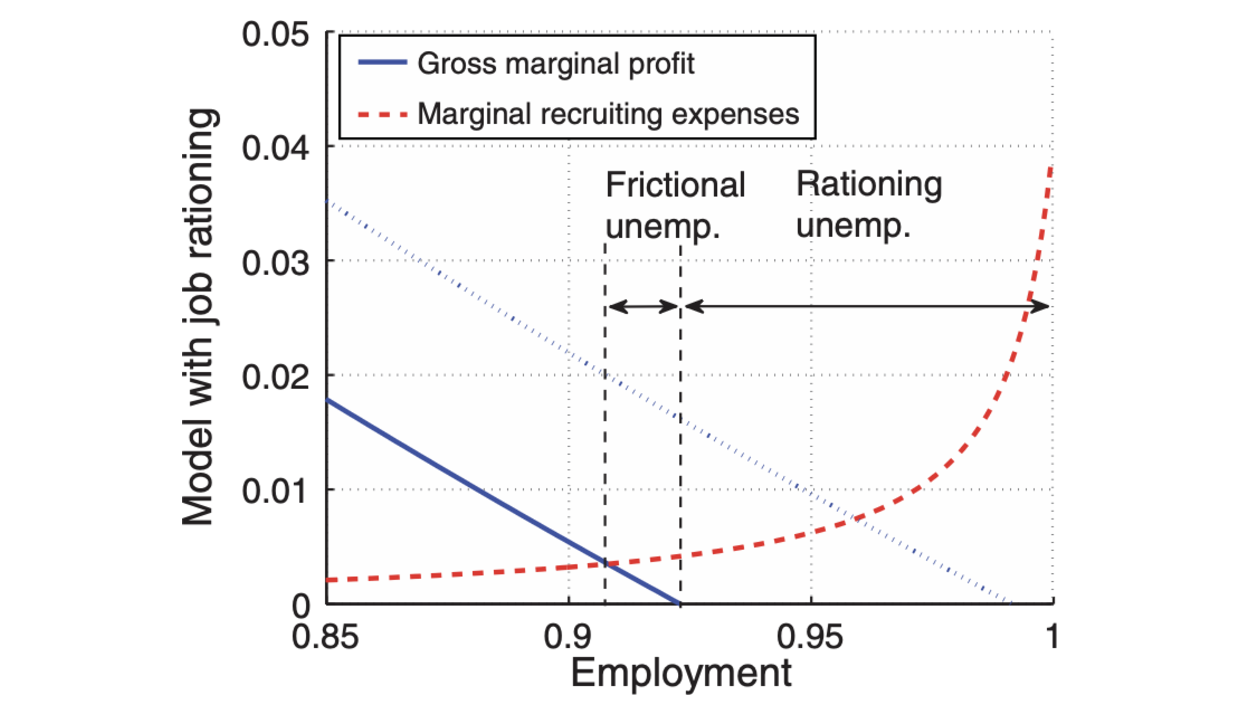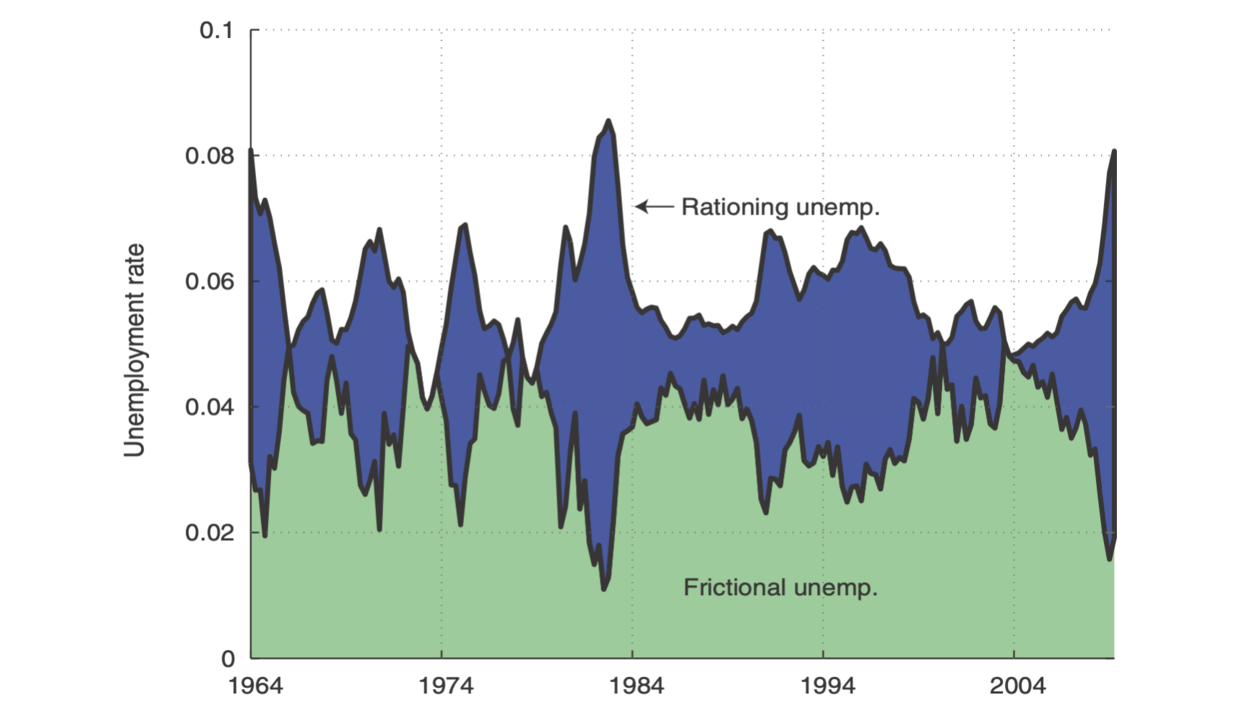Abstract
This paper proposes a search-and-matching model of unemployment in which jobs are rationed: the labor market does not clear in the absence of matching frictions. This job shortage arises in an economic equilibrium from the combination of some wage rigidity and diminishing marginal returns to labor. In recessions, job rationing is acute, driving the rise in unemployment, whereas matching frictions contribute little to unemployment. Intuitively in recessions, jobs are lacking, the labor market is slack, and recruiting is easy and inexpensive, so matching frictions do not matter much. In a calibrated model, cyclical fluctuations in the composition of unemployment are large.
Figure 1E: Equilibrium of the job-rationing model in good times

Figure 1F: Equilibrium of the job-rationing model in bad times

Figure 5: Rationing unemployment and frictional unemployment in the job-rationing model calibrated to the United States, 1964–2009

Citation
Michaillat, Pascal. 2012. “Do Matching Frictions Explain Unemployment? Not in Bad Times.” American Economic Review 102 (4): 1721–1750. https://doi.org/10.1257/aer.102.4.1721.
@article{M12,
author = {Pascal Michaillat},
year = {2012},
title = {Do Matching Frictions Explain Unemployment? Not in Bad Times},
journal = {American Economic Review},
volume = {102},
number = {4},
pages = {1721--1750},
url = {https://doi.org/10.1257/aer.102.4.1721}}
Related material
- Presentation slides
- Nontechnical summary for CentrePiece
- PhD dissertation (2010) – My PhD dissertation at UC Berkeley is the basis for this paper. Chapter 2 in particular provides intuition for the main results of the paper based on an elementary, urn-ball model of the labor market.